Ford Escape (2000-2023) firing order — diagram & guide
Mastering the Ford Escape firing order for enhanced driving.

Ever since Ford ventured into the compact SUV market, the Escape was its pinnacle model in this lineup. Not only did it offer all the amenities of regular SUV-class cars, but it also came in strong in terms of engine selection.
The car offers something for everyone, so if you own one experiencing potential misfires or need engine servicing, this guide will help you. Our team worked tirelessly to bring you a complete breakdown of the Ford Escape (2000-2023) firing order including all the engines and specs featured in that period.
| CAR MODEL YEAR | ENGINE | FIRING ORDER |
|---|---|---|
| 2000-2007 Escape (1st Gen) | 2.0L | 1-3-4-2 |
| 2.3L | 1-3-4-2 | |
| 3.0L | 1-4-2-5-3-6 | |
| 2008-2012 Escape (2nd Gen) | 2.5L | 1-3-4-2 |
| 2013-2019 Escape (3rd Gen) | 1.6L | 1-3-4-2 |
| 2.0L EcoBoost | 1-3-4-2 | |
| 2020+ Escape (4th Gen) | 1.5L Turbo | 1-2-3 |
First-generation Escape (2000-2007) firing order
Back when the Escape made its debut, the base engine option for the car was the 3.0-liter Duratec V6 engine. There was also the lower-displacement 2.0-liter Zetec four-cylinder, and the 2.3-liter one was added amidst the first-gen’s production.
Let’s take a look at the firing order specs for each of these engines as we further dive into the cylinder configuration of each option.
Ford Escape 2.0L firing order
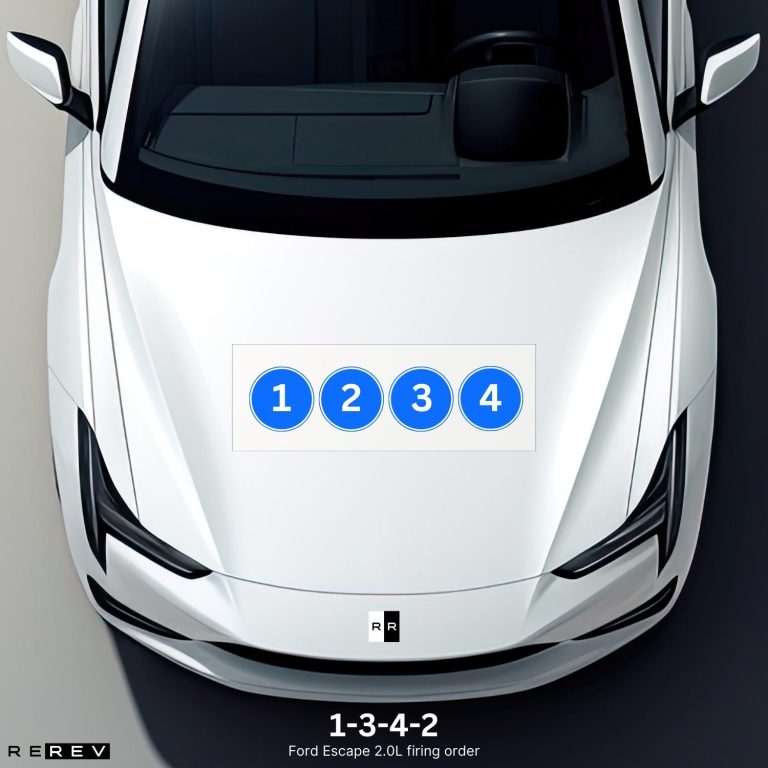
We’ll start with one of the most common base options for this model and that’s the 2.0-liter Escape engine. The four-cylinder Zetec petrol powertrain was used in the early days of this model and it has a Ford Escape 2.0L firing order 1-3-4-2.
The cylinders are arranged in a straight line from the first one on the left side of the engine to the fourth one on the right-most end. So, this one is the simplest one to maintain and to identify the cylinders as well so you can properly apply the firing order.
Ford Escape 2.3L firing order
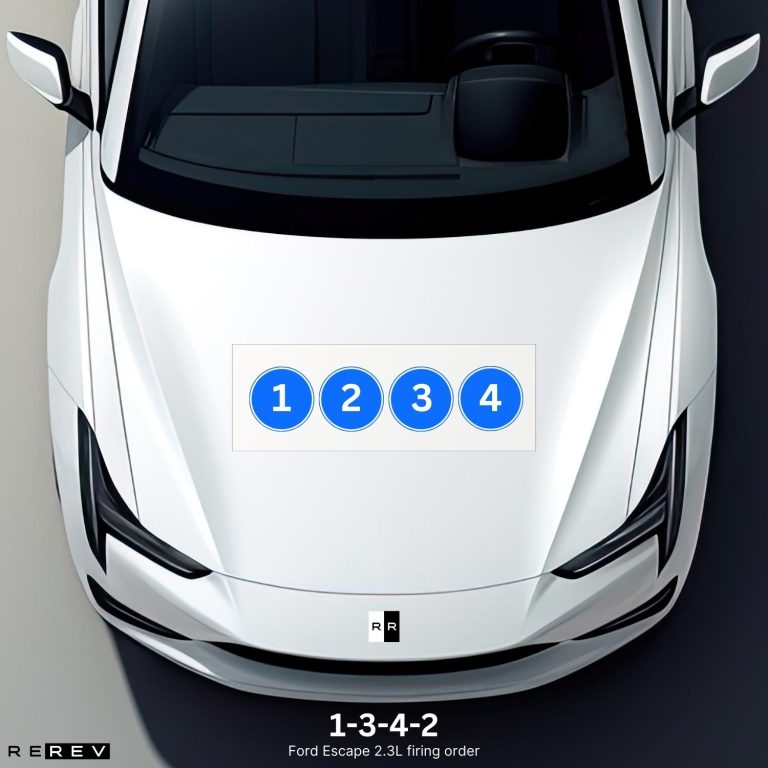
We’ll move on with yet another four-cylinder on our list here since the 2.3-liter Duratec was a smaller cousin to the 3.0-liter V6. The important thing to note is that the Ford Escape 2.3L firing order is 1-3-4-2 since this one is a four-cylinder and not the V6 version.
It also means the engine has four cylinders and these are aligned 1 to 4 from left to right. The key point here is that the firing order and the cylinder configuration of this engine both match with the 2.0-liter engine since these are both four-cylinder engines with a similar block.
Ford Escape 3.0L firing order
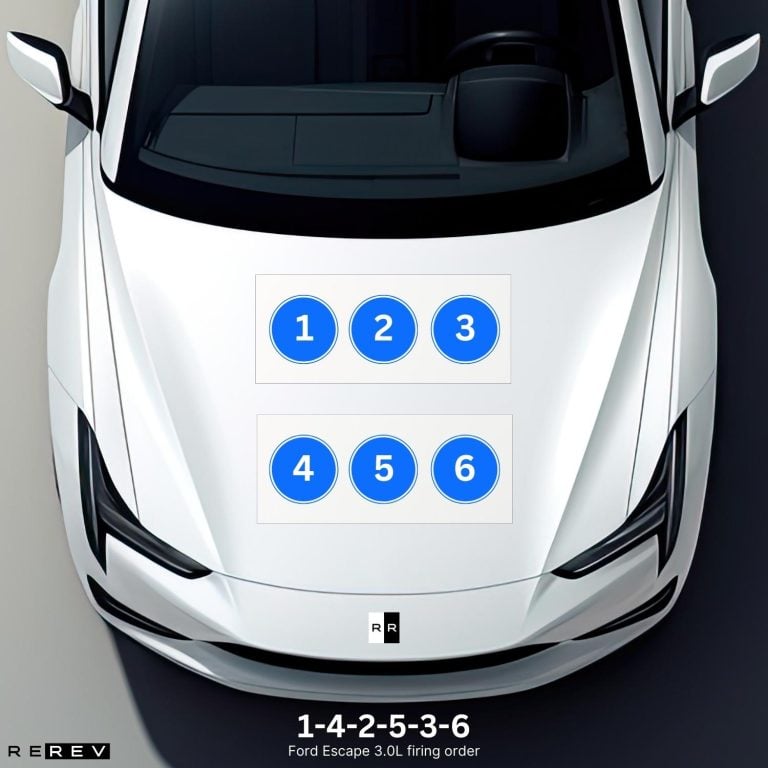
Finally, the first-gen Escape had a V6 engine with a 3.0-liter displacement. This is important since the Ford Escape 3.0L firing order is 1-4-2-5-3-6 and this one is a transversely-placed V6 engine. That means the cylinder banks are rotated 90 degrees, so you’ve got the upper and lower bank instead of a left and right one.
In other words, the upper cylinders are 1, 2, and 3 from left to right, while the lower bank houses cylinders 4, 5, and 6 also looking from left to right.
Second-generation Escape (2008-2012) firing order
For the second-gen Escape, the same 2.3-liter and 3.0-liter Duratec engines were used but the Zetec four-cylinder was thrown out of the lineup. Its place was filled with the new 2.5-liter four-cylinder and this one had a similar build and configuration as the 2.3-liter Duratec engine.
We’ll still give you an overview of the firing order and cylinder layout just in case:
Ford Escape 2.5L firing order
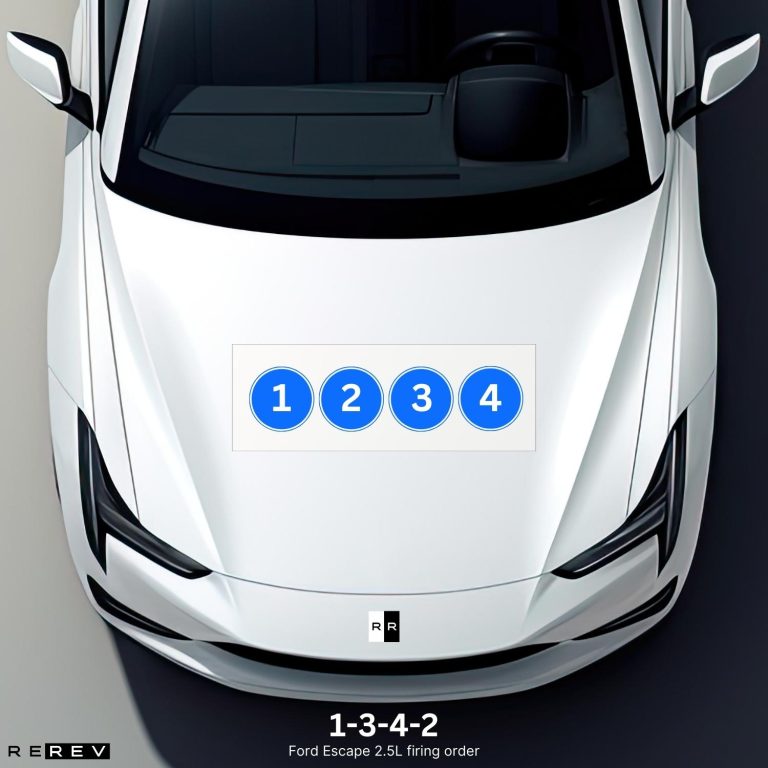
As a newly-introduced engine, the 2.5-liter Duratec four-cylinder has a lot of things in common with the 2.3-liter one. So, the Ford Escape 2.5L firing order is 1-3-4-2 and the cylinders go from 1 to 4 from left to right.
So, it’s almost identical to the 2.3-liter Duratec and the same firing order applies, but there are slight differences between these two engines which set them apart.
Third-generation Escape (2013-2019) firing order
By the time the fourth generation of the Escape has been introduced, Ford has already gotten rid of the V6 engine for the Escape. So, the model was left with the regular 2.5-liter Duratec four-cylinder that we’ve already mentioned, and a few new turbocharged engines that we’ll cover.
Ford Escape 1.6L firing order
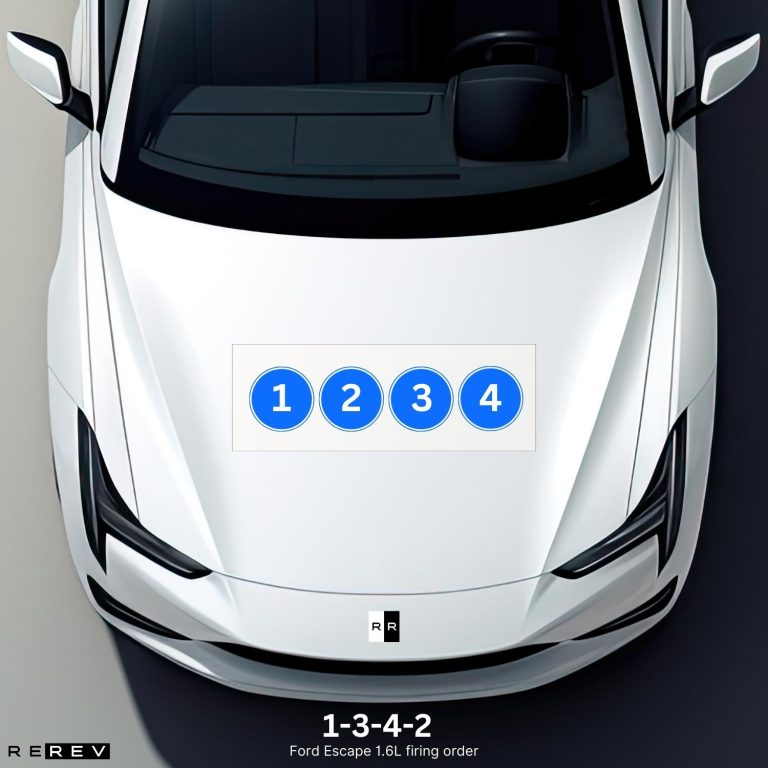
As one of the most widely-used Ford engines as of late, the 1.6-liter EcoBoost also found its way into the Escape lineup. It replaced the previous 2.3-liter engine and the Ford Escape 1.6L firing order is 1-3-4-2 which is still the same as it was for its predecessor.
The cylinder pattern is also the same, having cylinders go from 1 to 4 in a straight line looking from the left side of the engine towards the right one. However, there’s one major difference since the EcoBoost is turbocharged while the previous engine was a naturally aspirated four-cylinder.
Ford Escape 2.0L EcoBoost firing order
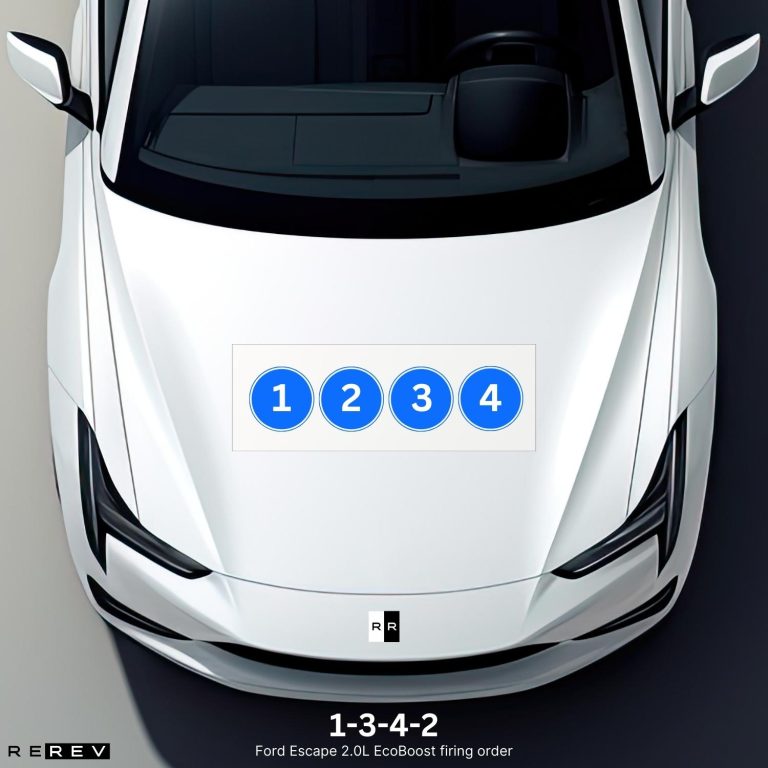
To avoid confusion, the 2.0-liter EcoBoost isn’t the same engine as the older 2.0-liter Zetec featured in the first generation of the Escape. However, the Ford Escape 2.0L EcoBoost is 1-3-4-2 which once again overlaps with the older engine.
The cylinder configuration is the same as on the smaller 1.6-liter EcoBoost, so you have cylinder number one on the left side and cylinders 2, 3, and 4 spanning toward the right end of the engine, looking from outside of the car.
Fourth-generation Escape (2020-ongoing) firing order
Finally, the fourth-gen of the Escape kept the 2.5-liter Duratec and the 2.0-liter EcoBoost engines in the lineup, but it received a new option in terms of a three-cylinder turbo engine.
So, we’ll only discuss the firing order and cylinder configuration of that one since it’s the only new addition to the palette of Escape engines.
Ford Escape 1.5L firing order
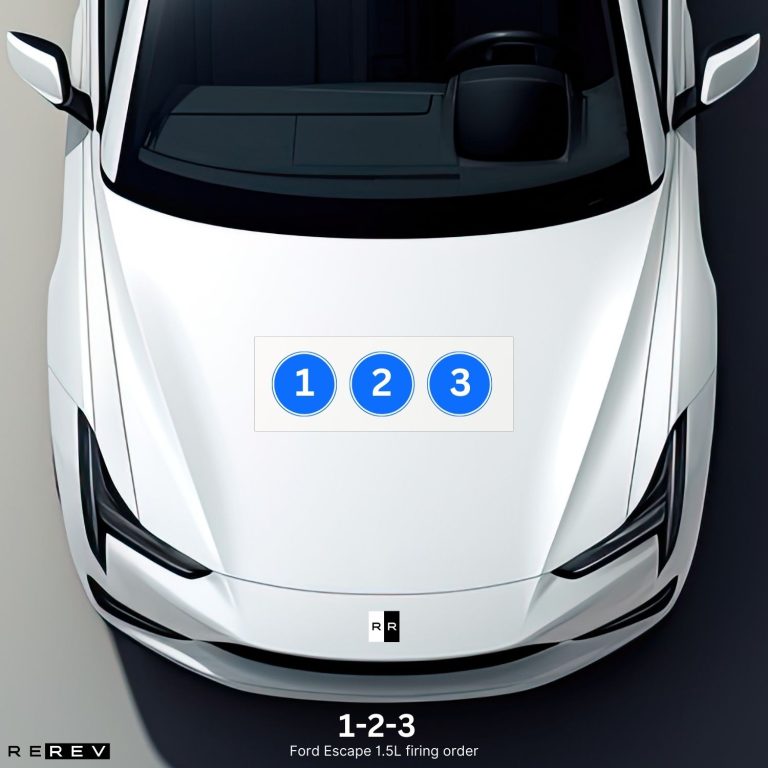
Finally, the Ford Escape 1.5L firing order is 1-2-3 since this one is a three-cylinder turbo engine also used in the Fiesta ST. However, it’s still capable enough to carry the chassis of this car and it has by far the best fuel mileage of any other engine used in the Escape.
Also, it’s easy to use the firing order for this one since the cylinders go from 1, 2, and 3 looking from left to right, which is the simplest cylinder configuration of all the Escape engines.
Our take
Overall, we hope that this guide has caught up with everything you may want to know about the firing order of Ford Escape engines.
We’ve done our best to include all the different engines used by this model through the generations and model years, so we’ll leave the maintenance of the engine to you knowing that you’ll have all the essential info you may need.